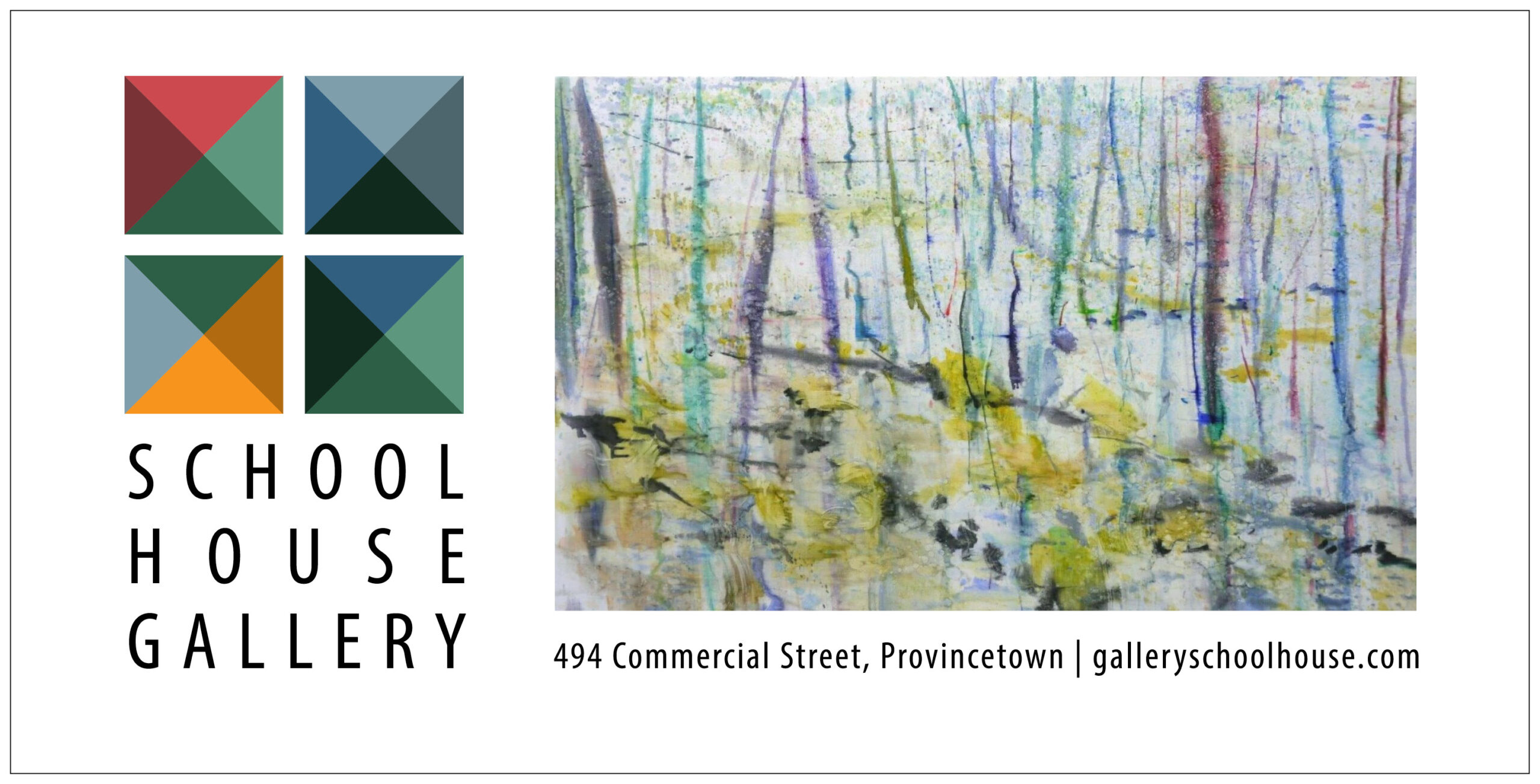Antonia Angress at Castle Hill
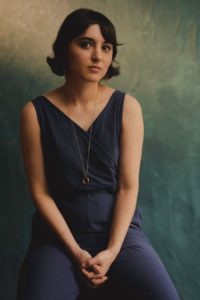
Antonia Angress’s first book, Sirens & Muses, published this month by Penguin Random House, is more than a classic coming-of-age novel. It focuses on the connection between art and politics.
“I’m interested in how images can shape public discourse or shift public consciousness around an issue,” Angress says. “The novel asks: is art an effective form of political discourse?”
The answer, she says, is not clear. She will discuss this and other ideas in a talk at the Truro Center for the Arts at Castle Hill on Wednesday, July 20 at 6 p.m. The event is free.
Angress was born in Los Angeles but grew up in Costa Rica, where she went to a French international school. Growing up immersed in three cultures and speaking three languages, “I never really fully felt like I belonged anywhere,” she says.
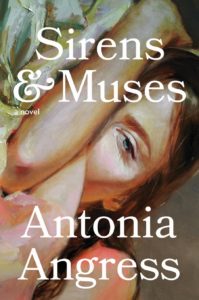
Several characters in Sirens & Muses grapple with similar challenges: one has a nomadic existence, moving constantly from place to place, and another, from Louisiana, is pulled “emotionally and aesthetically” back to her home state as she comes of age in New York City.
“My background made me good at shape-shifting and standing outside and being an observer,” the novelist says. “And I think that’s a very useful skill for a fiction writer, to be able to stand apart and observe, but also empathize.”
For more information, visit castlehill.org. —Emma Madgic
Dale Roberts at Blue Heron Gallery
Blue Heron Gallery, a mainstay in the Wellfleet gallery scene, is closing after the summer. Its swan-song season boasts a rich variety of artwork.
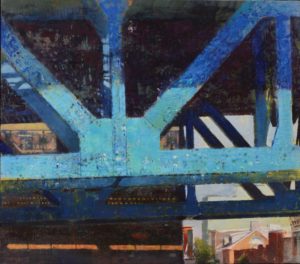
Throughout the summer, the gallery is devoting a large portion of its main space to the encaustic paintings of Dale Roberts. Roberts, who lives near Philadelphia, is interested in surfaces found in both natural and urban settings. In Stoic Structures, a painting of early spring, he captures the season in pale colors and uses the viscous materiality of encaustic paint to depict the textures of a grassy field in the foreground of the picture.
In other paintings, he relishes the textures found in urban spaces, such as steel bridges and cement embankments. In Bridge Blue, Roberts depicts late afternoon light casting dramatic shadows in a close-up urban view. The triangles of the bridge and his focus on surface place the painting in the territory of abstraction, which is no surprise considering he recently taught a class at Castle Hill titled “Abstract and Real: Working Together.” —Abraham Storer
Cuba in Provincetown
Traveling to Cuba is not easy, but a quick trip to Galería Cubana at 357 Commercial St. in Provincetown can give one a snapshot of Cuban life through the lens of some of its artists.
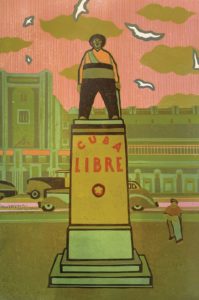
A three-person show featuring Dairan Fernandez de la Fuente, Harold López Muñoz, and Darwin Estacio Martinez presents a colorful picture of the country with visions both historical and contemporary. It will continue through July 18.
Harold López Muñoz paints young, fashionable people in luscious strokes, although his strongest painting is Perro perdido (Lost dog). Full of swirling, disorienting movement, the painting depicts a lone dog on a seaside road. It’s a symbolic image suggesting a narrative through its imagery and sinuous brush strokes.
Dairan Fernandez de la Fuente conjures the past in his delicate line drawings, large-scale cityscapes, and multicolor woodcut prints. His works on paper, typically depicting old cars and bulky men in suits, reveal a sophisticated use of line and pattern. In the woodcut Cuba Libre (Free Cuba), Fernandez presents a political monument of a worker. In a country closed off to much of the world and still influenced by revolutionary ideologies of the past, this work functions as compelling social commentary.
The gallery will host a reception for Fernandez and Lopez Muñoz on Friday, July 15 from 6 to 9 p.m., with an artist talk scheduled for Saturday, July 16 at 11 a.m. —Abraham Storer
Four Plays for a Planet in Peril
Playwright Lee Roscoe of Brewster, collaborating with filmmaker Janet Murphy Robertson, calls their theater-film hybrid, titled Four Plays for a Planet in Peril, “a shared vision.”
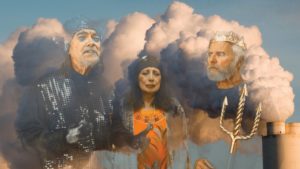
Using four of Roscoe’s previously written plays — Water Spirits, The Cage, Reprieve, and The Warning — Roscoe and Robertson combine traditional filmmaking, green screens, sound effects, music, cartooning, and original scripts to form something new.
The plays are connected, all dealing with the effects of climate change and the destruction it causes to the environment, society, and human emotions.
Four Plays premieres at the Eastham Public Library on Wednesday, July 20 at 3:30 p.m. The Warning, the finale, is a finalist in three categories at the Los Angeles Independent Short Film Awards. —Eve Samaha
John Koch Mixes It Up
After years as a journalist and arts editor at the Boston Globe, John Koch dove headfirst into the pursuit of painting. The itch had long been there. As a child, he found himself inspired by his grandfather, an artist.
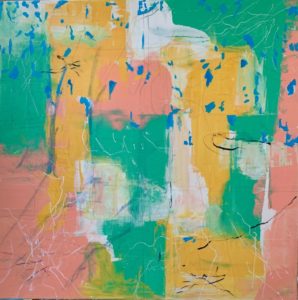
“I loved being in his studio,” Koch recalls. Despite devoting his career to journalism, Koch says, “I knew I would do it when I retired. Art chose me.”
He has made up for lost time and has now been painting for well over a decade. On a recent visit to his Truro studio, canvases ranging from landscapes to collaged abstractions filled the space where he was putting the finishing touches on work for a show opening at the Provincetown Commons on July 12 and continuing through July 24 with a reception on Friday, July 15 from 5 to 7 p.m.
There’s an insatiable curiosity to Koch’s work. In one small landscape, he paints the woods outside his studio. The gridded structure of intersecting trees and shadows is echoed in other paintings, distilled into an abstract language.
He’s fearless with materials, scraping paint across surfaces in some works, using knives, brushes, plastic forks, and discarded doormats to make marks. He moves freely between subjects, from oil paintings of nude models to memory-laden mixed-media collages. He might have gotten a late start, but there’s no stopping him now. —Abraham Storer
John Rae at Farm Projects in Wellfleet
At Wellfleet’s Farm Projects, works by artist John Rae are showing through July 25. Rae, 61, lives in New Jersey but has spent summers in Wellfleet and Provincetown his whole life.
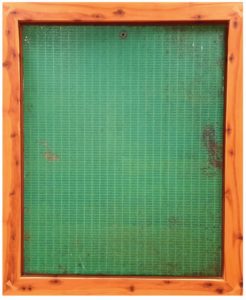
The exhibition is titled “Discarded Landscape.”
Farm Projects curator and designer Susie Nielsen points to one work: a green metal sheet that has the word “trees” screen-printed down its length. It’s framed by light-brown, mottled wood.
Nielsen says that Rae takes some form of decay and “then does something really finite over it — like repetitive motions.”
For Trees, Rae found the metal, already green. The wooden frame came from a grove of dead cedar trees, originally planted by people employed by the Works Progress Administration after World War II.
The works on display at the gallery, at 355 Main St. in Wellfleet, range from tables inlaid with little red lights, to pieces of metal, to paper stained with muddy creek water. Fine-line work and deliberate carvings balance the messiness of their respective found backgrounds. —Eve Samaha
A Reunion With Mary
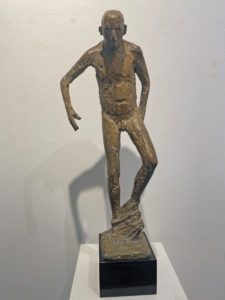
The Provincetown Public Art Foundation recently commissioned the sculptor Penelope Jencks of Wellfleet to create a lifesize bronze sculpture of the writer and labor activist Mary Heaton Vorse, author of the Provincetown memoir Time and the Town.
As a continued effort to fund the project, Gene Tartaglia, curator of exhibitions at the Mary Heaton Vorse house, and gallerist Berta Walker have curated an exhibition titled “Mary’s Friends: An Artist’s Reunion.”
Opening on Thursday, July 14 at the Mary Heaton Vorse house, 466 Commercial St., from 5 to 7 p.m. and running until Aug. 7, the show will feature sculptures by Jencks as well as work by Provincetown artists who knew Vorse from her 1907 arrival in town until her death in 1966.
Maps Make Siân Robertson’s Heart Race
Siân Robertson works in maps.
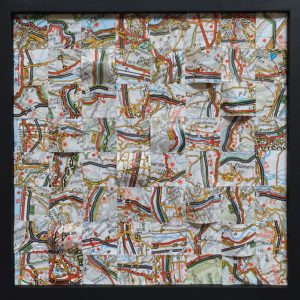
“I like to say that a beautiful map makes my heart race and my hand reach for my X-acto
knife,” says Robertson, whose solo show, “Wanderlust,” is on display at Gallery 444 in Provincetown (444 Commercial St.) now through July 19 with an opening reception on Friday, July 15 from 6 to 9 p.m. (The artist, who lives in Truro, is also the Independent’s office assistant.)
The show includes both wall-mounted and freestanding works. Robertson describes an intricate geometry to her work: she makes three-dimensional objects from two-dimensional maps that are, themselves, a reflection of a three-dimensional world.
With so many maps in the world, which ones to glom onto? “When I select maps to use in my work, I’m driven almost entirely by the aesthetics of the colors and shapes within them,” she says.
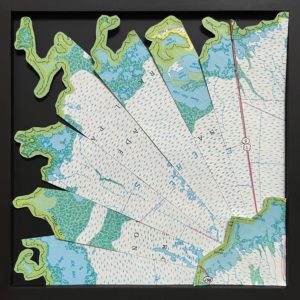
But there are aesthetic dimensions beyond what gets printed on the map. Robertson works primarily with used maps. “The paper is worn at the folds, yellowed at the edges; cities are circled, routes are highlighted,” she says. “Coffee spills, phone numbers, and directional notes all speak to its earlier life as a functional object in someone else’s hands.”
In Robertson’s hands, the maps take on a beauty that, whatever their starting point, is entirely due to her vision. In Mangrove and Swamp, a map takes on irregularly scalloped edges, sometimes curving in on itself, sometimes jutting out into a dark abyss. The map thus is imbued with the feeling of terrain. The work tells us not about the coordinates of land but the texture of it — the way land is jagged and rough. —Paul Sullivan

